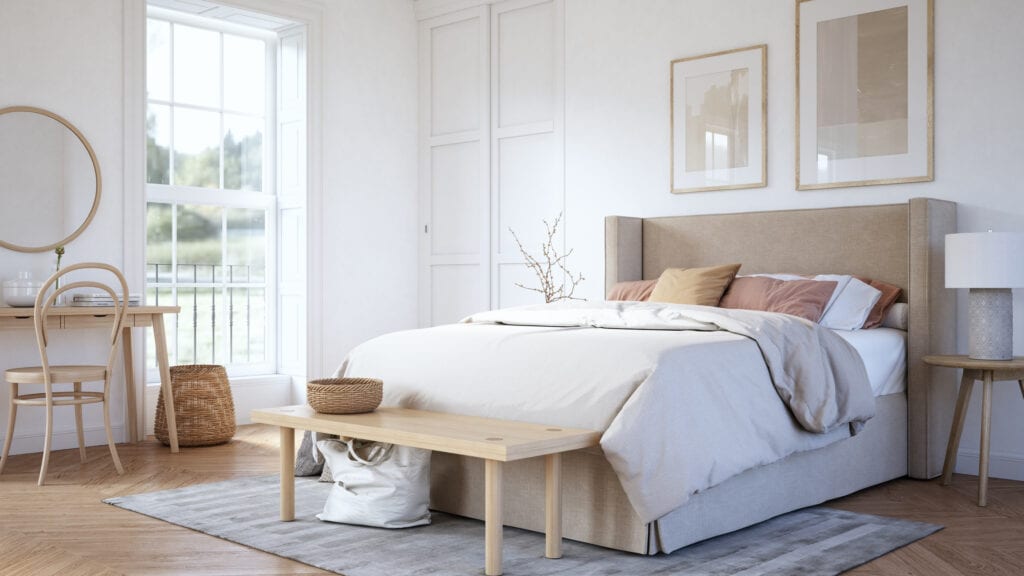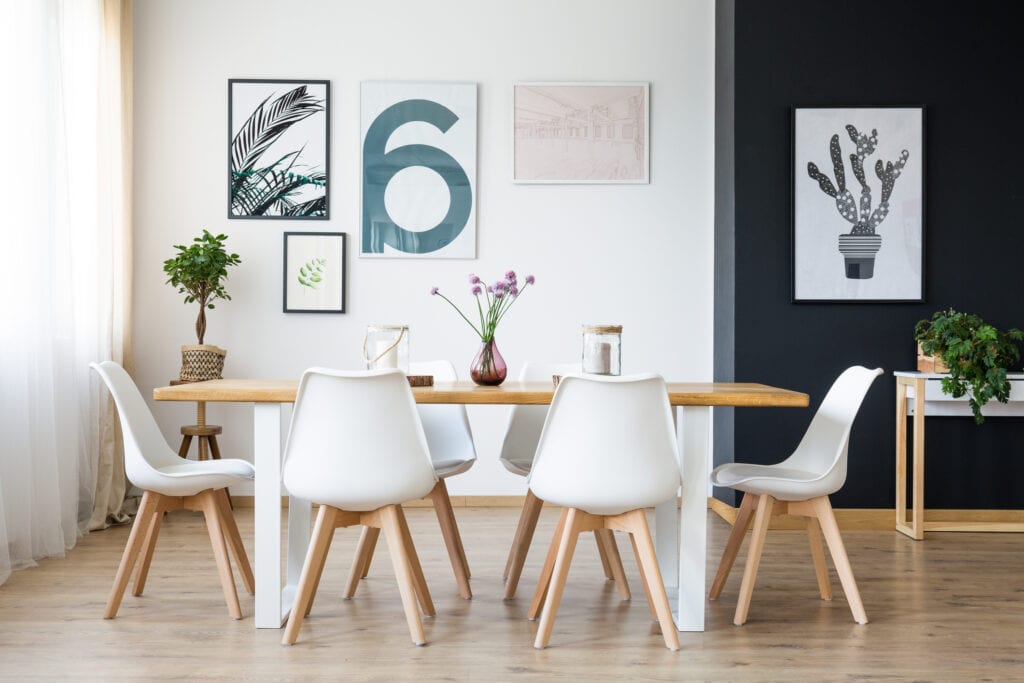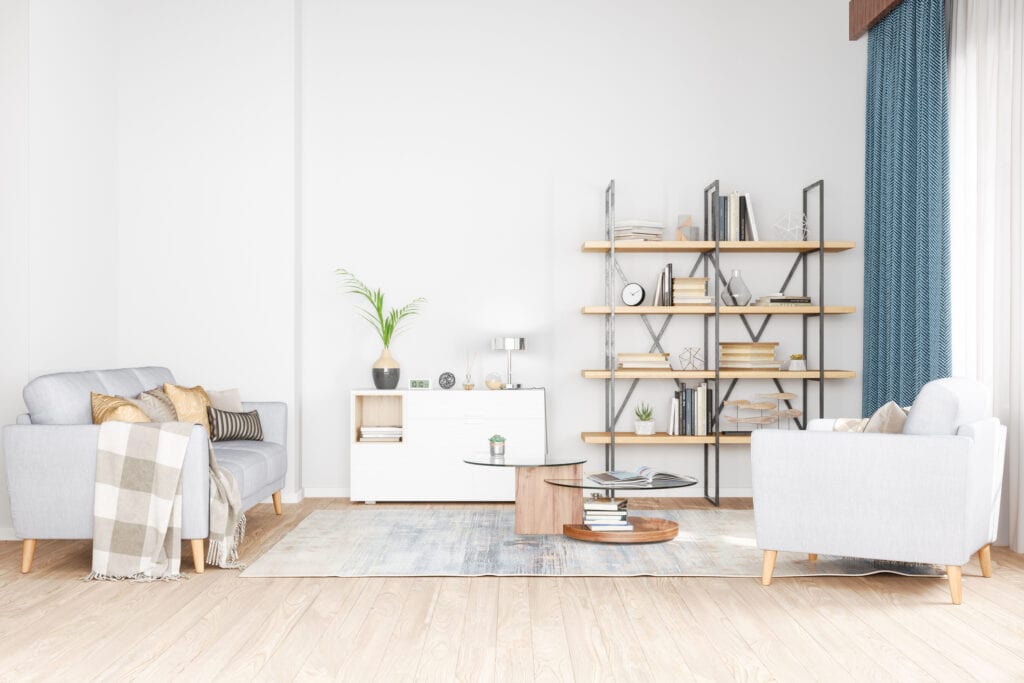Nordic Design: A Blend of Form and Function
We can’t say enough good things about Nordic design. Though this aesthetic has been around since the post-World War II era — and even longer in Northern Europe — it has recently experienced a sharp spike in popularity. Since the look is defined by clean lines, chic minimalism and an overall airy feel, it’s not hard to see why so many are intent on bringing a Scandinavian feel to their interiors.
However, it’s not always easy to take design inspiration from a photo and bring it to life. In this case, you might wonder how to keep Scandinavian interiors from feeling too stark or what type of furniture works best with the look.
Don’t worry. We’ve compiled a list of the defining factors of Scandinavian design with tips on how to re-create this style in your own home. Whether you’ve been a fan of Nordic interiors for years or you’re just coming into contact with them for the first time, we’re sure you’ll love what you see.

Choose subdued colors
Color is an important place to start when defining any design style. It acts as a backdrop for the rest of the design and helps brings separate elements together in a cohesive manner. In this, Scandinavian design is no exception.
This style is often compared to mid-century modern. While it does borrow many details from the earlier trend, their color palettes are what set the two apart. Mid-century modern spaces are known for their dark, rich hues. In Scandinavian spaces, the focus is on keeping things bright, light and airy.
To that end, you want to make sure the colors you choose are subdued. Stick to pastel shades and go heavy on neutrals. If you’d like to add a bit more color, icy blues and Millennial Pink are particularly popular shades.

Choose furniture with clean lines
Furniture is one of the identifying factors of Nordic design. It has an undoubtedly specific look. (Anyone who’s ever put together an item from Ikea will know the exact aesthetic we’re talking about.)Scandinavian furniture features simple silhouettes, clean lines and an emphasis on natural materials. Whenever possible, there’s also a focus on choosing well-made, artisanal products over mass-produced pieces.
With this style of design, the placement is just as important as the products themselves. You’ll want to make your furniture the focal point of the room. Center living rooms around cozy seating areas, master suites around a lush bedroom set, and dining areas around a large farm table.
Add warmth through accents
There’s one key difference between Nordic design and other minimalist spaces: the comfort level. While many minimalist interiors can come off feeling a little too stark or cold, Scandinavian spaces are meant to be warm and inviting. Cozy, comforting accents are the key to that success. In Nordic countries, they call this concept hygge. Pronounced hoo-gah, the word means comfort in Danish and is a central principle in many Northern European designs. Textiles are a great way to make any room more comfortable. Add plenty of pillows and soft blankets into your design. Then, top everything off with a plush throw rug.
Keep in mind there are plenty of ways to bring warmth into the room other than textiles. You could also consider incorporating greenery and using pops of bright accent colors.

onurdongel / Getty Images
Nordic design embraces negative space
Since Nordic design is so simplistic, it should come as no surprise that less is more. Here, each room’s function should be the star of the show. Instead of muddling that purpose with clutter, let negative space help bring it into focus.
To do this effectively, your best bet is to start from scratch. Remove all the items from the space and, once you have a blank canvas, move them back in piece by piece. Think like a curator and decide individually whether each item adds specific value to the design. Whenever you’re unsure, feel free to leave that piece out.
We know that, for some, negative space can feel uncomfortable at first. If you’re one of these people, try not to give in to your initial impulses. Give yourself some time to adjust to the room’s new design. If after a few days the space still feels too empty, consider which parts of the design needs work. Tweak those until you find your perfect balance.
The bottom line
Since the style was founded on integrating form and function, focusing on comfort and embracing “less is more,” it’s easy to see why so many people are obsessed with Nordic design. That said, we know that re-creating an aesthetic can be much harder than it seems at first glance. Our tips on how to embrace Scandinavian design can help you construct a look you love.
What do you think about Nordic interiors? Will you be incorporating these design principles in your home?